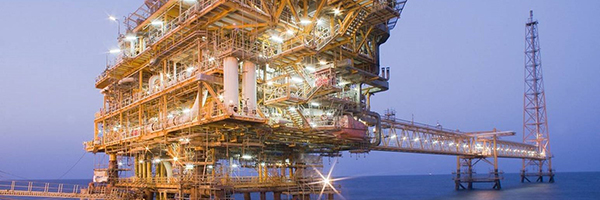Iran independently completes new phase in world’s largest gas field
 French and Chinese firms withdrew from the project in 2018 to avoid US sanctions.
French and Chinese firms withdrew from the project in 2018 to avoid US sanctions.
Iranian President Ebrahim Raisi inaugurated Phase 11 of the South Pars Gas Field, regarded as the most important gas project in the country, in a ceremony in Asaluyeh in the southern province of Bushehr on 28 August with Oil Minister Javad Owji.
Construction of Phase 11 of the South Pars field began 20 years ago but was halted after France’s TotalEnergies and the China National Petroleum Corporation (CNPC) pulled out of the project in 2018 due to US sanctions.
That year, US President Donald Trump unilaterally withdrew from the 2015 nuclear deal and re-imposed harsh sanctions on the Islamic Republic.
Iranian officials granted development of the South Pars field to local firms, which operated under the auspices of the National Iranian Oil Company (NIOC). The South Pars/North Dome Field, shared between the Islamic Republic and Qatar, is by far the world’s largest natural gas field, holding an estimated 51 trillion cubic meters of natural gas and some 50 billion barrels of natural gas condensates.
By completing the project locally, Iran saved $800 million in foreign currency, oil minister Owji said at the ceremony, adding that the country’s gas output volume has increased by 56 million cubic meters following its launch.
Owji criticized TotalEnergies and other foreign companies involved in the project, which delayed the construction of this phase for 20 years. He said the foreign companies that abandoned the project “are now left flabbergasted” after seeing its completion.
Benefiting from expert domestic specialists and engineers, Phase 11 became operational in 20 months, he emphasized. This was done partly by taking one of the platforms at the discontinued Phase 12 of South Pars and installing it in Phase 11. Local media reported the 3,200-ton platform was moved after buying a crane ship from Russia.
Gas from the field is transported to onshore facilities using an undersea pipeline, according to Deputy Petroleum Minister Mohsen Khojastehmehr.
According to ministry officials, when Phase 11 is fully developed in the coming years, Iran will be able to tap 24 wells to add up to 56 million cubic meters per day to its capacity. Fifteen million cubic meters a day are extracted currently.
According to official figures, Iran currently produces about 1 billion cubic meters per day of natural gas and plans to raise production capacity by another 500 million cubic meters per day by 2029.
Despite US sanctions, Iran continues to develop and market its oil and natural gas.
In May, Reuters reported that Iran’s crude exports and oil output hit their highest levels in five years, according to consultants, shipping data, and a source familiar with the matter.
Iranian crude exports exceeded 1.5 million barrels per day in May, the highest monthly rate since 2018. They were around 2.5 million barrels per day in 2018 before the US withdrawal from the nuclear deal.
Iranian officials hope the Islamic Republic’s acceptance into the BRICS+ economic bloc will also mitigate the impact of US sanctions moving forward. The Gross Domestic Product (GDP) of BRICS+ nations is now 36 percent of the global total. The BRICS+ nations seek to settle cross-border trade in their currencies rather than in dollars and hope to issue a new mutual currency for the bloc. If successful, such moves would allow Iran to pursue international trade without fear of US sanctions.
Before attending the Pars field inauguration, President Raisi traveled to Johannesburg for a BRICS meeting, where Iran was one of six new members invited to join the influential group in 2024.
